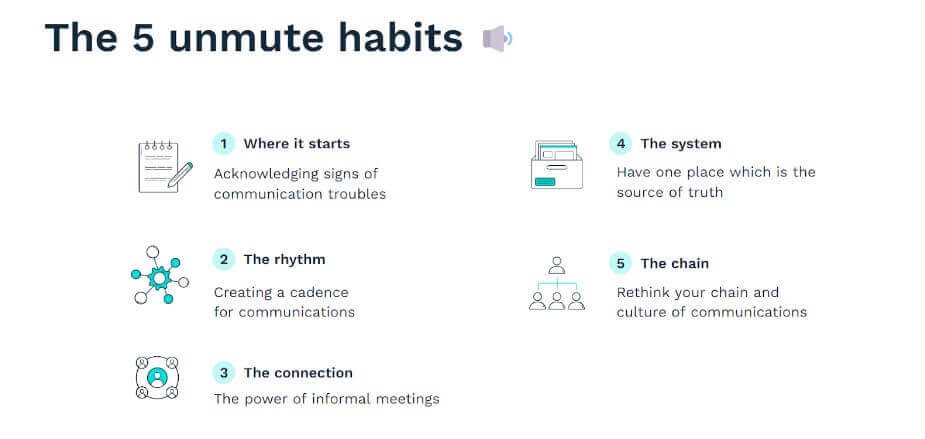You’re on Mute ~ scaling communication on a growing team
In the year when Twitter cut 50% of its workforce and Meta 13%, not to mention cuts in other premier tech brands, we managed to grow our client’s businesses and our pod. (Yes, this is an actual image of the team going off to surf school for Whales).

BUT it hasn’t come without some growing pains. Doubling team size in just a few months across territories has meant that more than ever, we’ve had to eat our own dog food, or rather we’ve had to really walk our Whale talk!
We all know that communicating effectively, both internally and externally, is the cornerstone of your team’s success.
Good communication = happiness.
The last few years have brought a lot of change and evolution—especially for entrepreneurs. As a result it’s been more challenging to scale a business.
We’ve seen teams work through hard situations and come out the other side unscathed but we’ve also seen the pitfalls of scaling a team and the silos of communication that can come with it.
Challenges with communication on a scaling team
As a business grows, communication processes that were previously informal and lightweight become difficult to maintain. Things become slower as communication has to filter through ‘department’ heads and through structured meetings.
To add to the pain, there’s often a point when employees start to leave taking vital knowledge with them. Then they’re replaced with new team members who don’t understand the current environment.
Symptoms of communication beginning to go wrong can include;
- Having company documentation in twenty different locations used by different people, each with their own secret annotations
- Death by a million unnecessary meetings
- Communication siloes where teams only communicate within themselves or within a few people within the team
- Team members getting upset because they don’t know what’s happening
- Broadcasting – where one group of people begin to ‘send’ messages to another group in a one way stream, rather than a dialogue
- More time spent discussing than doing
- Too many links in a chain where messages have to be conveyed from person to person or team to team, across ranks, which ends up wasting a huge amount of time.
Welcome to scaling life!
It can be a frustrating time in a business but it doesn’t have to stay like this.
How to unmute your teams
In a recent webinar with Nadia Vatalidis of Remote, Alice Kramer of Bloom Growth™ and our very own Gary Vanbutsele 🐳 looked at habits that teams can use to ‘unmute’ communication and communication bad habits.

1. Acknowledging signs of trouble and checking assumptions
Misunderstandings often occur when employees assume that their colleagues are approaching a problem or project the same way that they would, based on their personal frame of reference. It’s important to check assumptions, especially in written communication and messaging tools, where tone can often be lost or misinterpreted.
2. Create a rhythm and cadence for communications
Creating a cadence for communications is important for consistency and getting teams in the habit of communicating. In a world of technology, it’s easy to bypass communications. At Whale, we run meetings with BloomGrowth’s software to keep it structured and outcome-based. No, this isn’t a product punt but we do believe in giving credit where credit is due!
3. Creating connection
Strategy sessions are fantastic, but nothing speaks “Unlocking growth” (our core purpose), like getting out there and trying new things together. Once a month and once a year, we get together but really get together. To learn and to play. And yes, that’s our CEO at surf school this summer.

4. Having a System
Of course we’re going to punt Whale here but only because it’s true. Having things undocumented means that things are open to being misinterpreted. It leads to chaos in a business, especially when someone leaves. And it’s not about documenting things and then leaving them. No, documentation in a centralized place and utilizing them in daily work is an important means of communication.
We continuously document key processes and ways of doing things on our own product to make sure to maintain consistency.
5. And rethinking your culture in general
If you’re going to have a number of levels of hierarchy in a business, communication is going to be slow and ineffective.
To the same effect, if you have blocks such as lack of trust, it’s going to affect communications negatively.
A series of interviews with over 200 tech workers in 2019 revealed that almost half the workers chose to hold back information that could be beneficial to their company. If anything, this is now worse as team members fear losing their jobs.

Communication Quick Fixes
Generally speaking, things don’t get fixed in a day but there are a few things you can implement within your team that within one week, could make the world of difference!
Earlier this year we banned internal email but had to look at a couple more elements within our communication, especially while we were scaling.
We put these practices into place;
- We used Slack for fun and for immediate reminders or quick messaging
- We implemented a weekly team meeting to share what we’d learned and reflect our value of unlocking growth.
- We high fived! We just LOVE KarmaBot because it’s a tool to specifically acknowledge each team members. As it turns out acknowledgement leads to feeling good which leads to better communication and collaboration. And don’t take our word for it, just ask Adam Grant.

We also
- Assigned each team expert within our business, their section within Whale to ensure constant documentation review.
- Decided to fly in our remote members once a quarter to meet in person.
- We created the best employee handbook in Whale.
Want to improve your team communications? Check out our eBook on Team Training.
Future-Ready HR:
A Guide to Using AI and Automation for Training

We interviewed the top human resource experts to discover AI and HR trends for the future.
Download the whitepaper to discover how AI and automation can revolutionize onboarding and training, empowering you to develop a future-ready workforce today!








